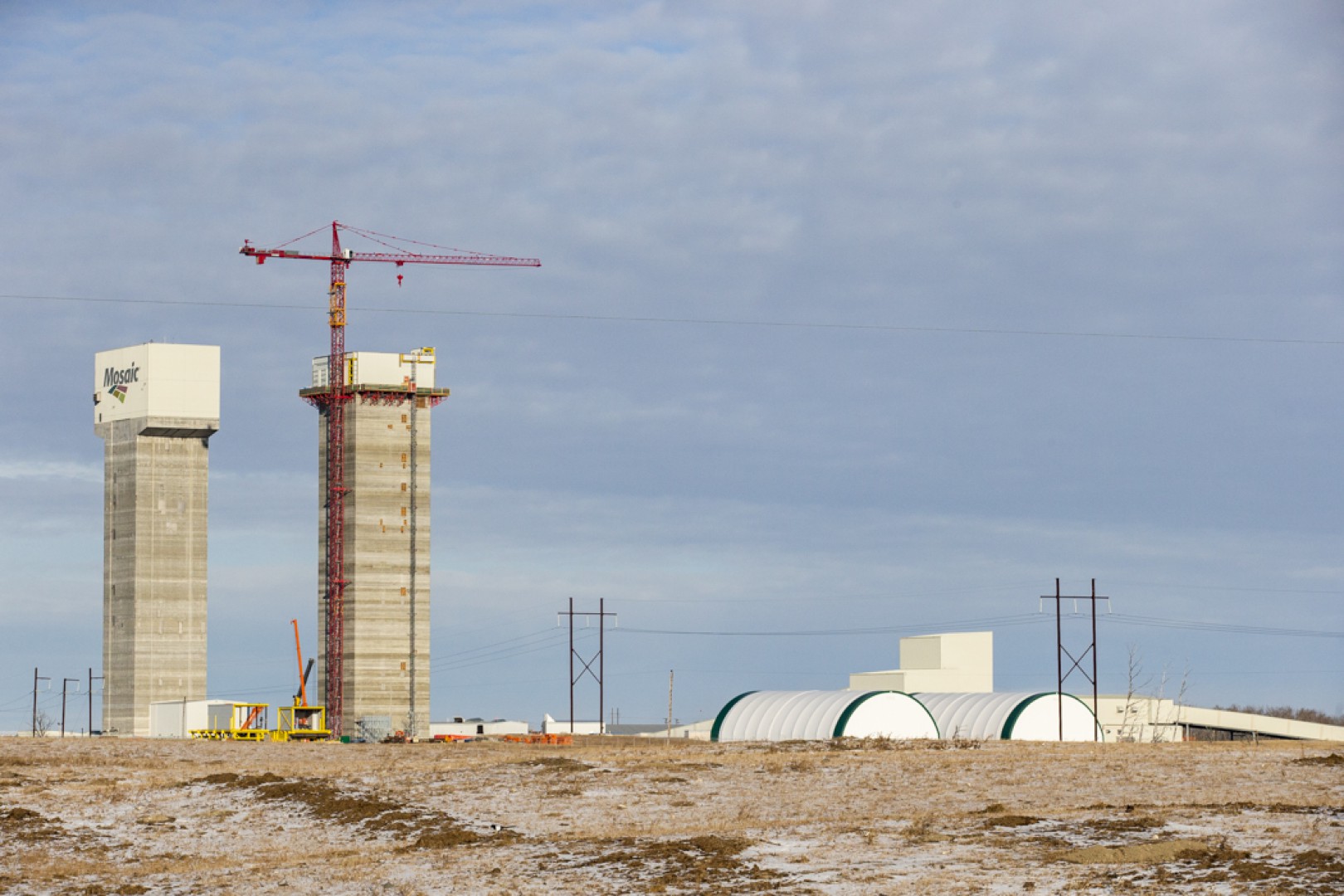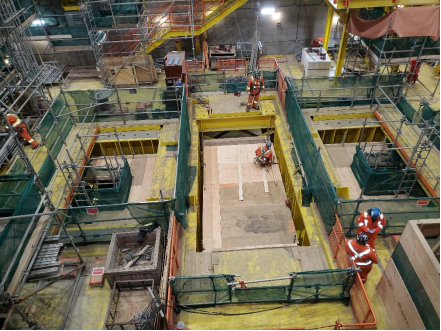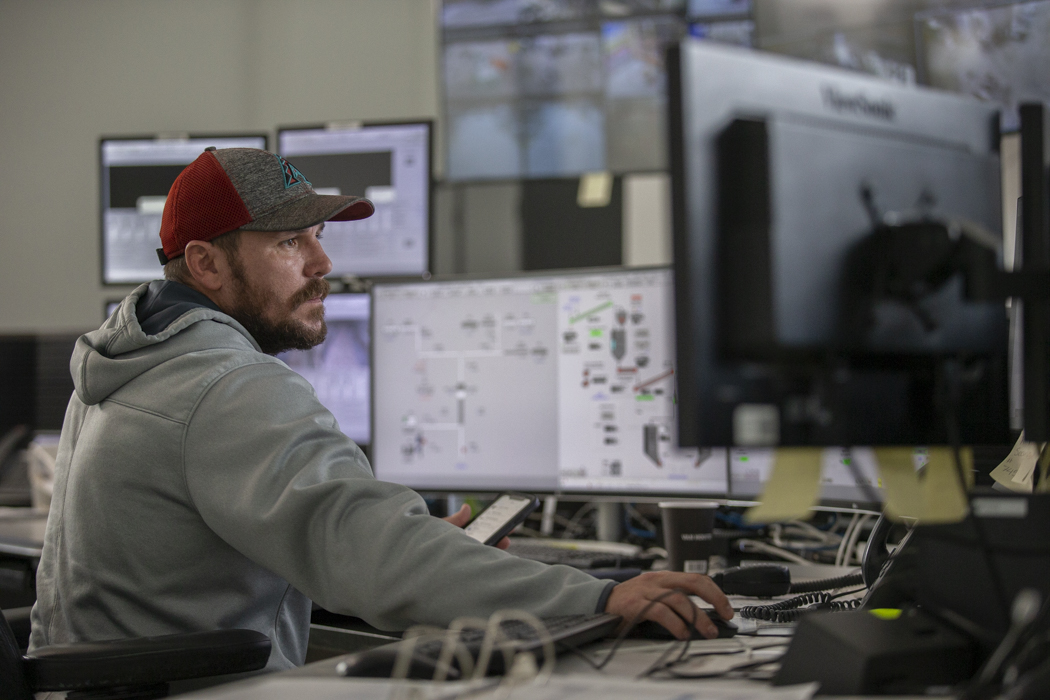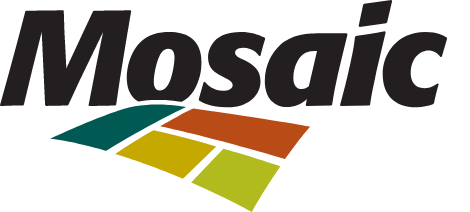
Esterhazy Transition: One Year to a Fully Operational K3
We’re making impressive progress constructing the second shaft headframe at K3 – outfitting it with piping, electrical trays, cable, lighting and other components required for it to become fully operational in March 2022. This more than 300-foot-tall ‘south’ headframe stands over a shaft that will transport primarily rich potash ore, while the ‘north’ shaft also transports people and materials.
During the first half of 2021, each steel floor is assembled at ground level in a modular fashion and then raised to their final position using a hydraulic jacking system.ΓÇ»The installation of the large Koepe hoist, an elevator and all the electrical/mechanical infrastructure occurs concurrently.ΓÇ»The next big milestone will be rope-up and installation of the large 60-ton skips—which will occur early Fall, with commissioning to follow.

Construction activity on the Koepe hoist floor
Ramping up Production at K3
We continue to break records at K3 – setting a new daily tonnage record in February. We are now consistently hoisting around 30,000 tons of ore per day through the ‘north’ shaft and expect the daily ton average to continue increasing as we move into the second half of the year.
Underground work continues on the south surge and coarse ore bins and on the mainline conveyor systems – all necessary components as we continue to ramp up production. The miner assembly team sent its sixth four-rotor mining machine to start cutting underground at K3 in January, and our first two-rotor mining machine left the shop in February to be used for development. We expect to add one more mining machine to the K3 fleet in April and will build three more to deploy when the south head frame becomes operational by mid-2022.
Testing of a new automated “brattice” (vent curtain) installer for the mining machines is complete, and work is now focused on continuing verification of the ore grade analyzer at one of our four-rotor miners. This will set the stage for us to begin full first-pass automation later this year, at which time we will be utilizing the full system of autonomous steering for all three passes along with automated installation of the hardware system.
Watch the automated mining equipment in action.
Transitioning from K1 and K2 Γ₧£ K3
As production picks up from K3, we continue to transition the rest of the Esterhazy footprint to shift underground mining at K1 and K2 over to K3.
Everything in that footprint – including miner automation control, data reporting, ore flow and emergency response – will be operated from a new Integrated Operations Center (IOC). Housed at K3, this new IOC is being designed and built to allow us to monitor and manage Esterhazy’s entire ore flow process – from underground and up to the mills – from one technology-enabled ‘hub.’
Design for the new IOC is currently being finalized, with the expectation that it will be up and running in 2022.

Esterhazy’s Integrated Operations Center (IOC) is being designed and built to allow us to monitor and
manage the entire ore flow process – from underground and up to the mills – from one technology-enabled ‘hub.’
Safety Always the Top Priority
We remain vigilant in our Covid-19 response and are providing training, resources and other support to help keep our people safe during this pandemic and beyond.
Safety will continue to be our number one priority as we enter the last year on this decade-long, $3 billion-dollar project to build the world’s largest and most competitive potash mine.
